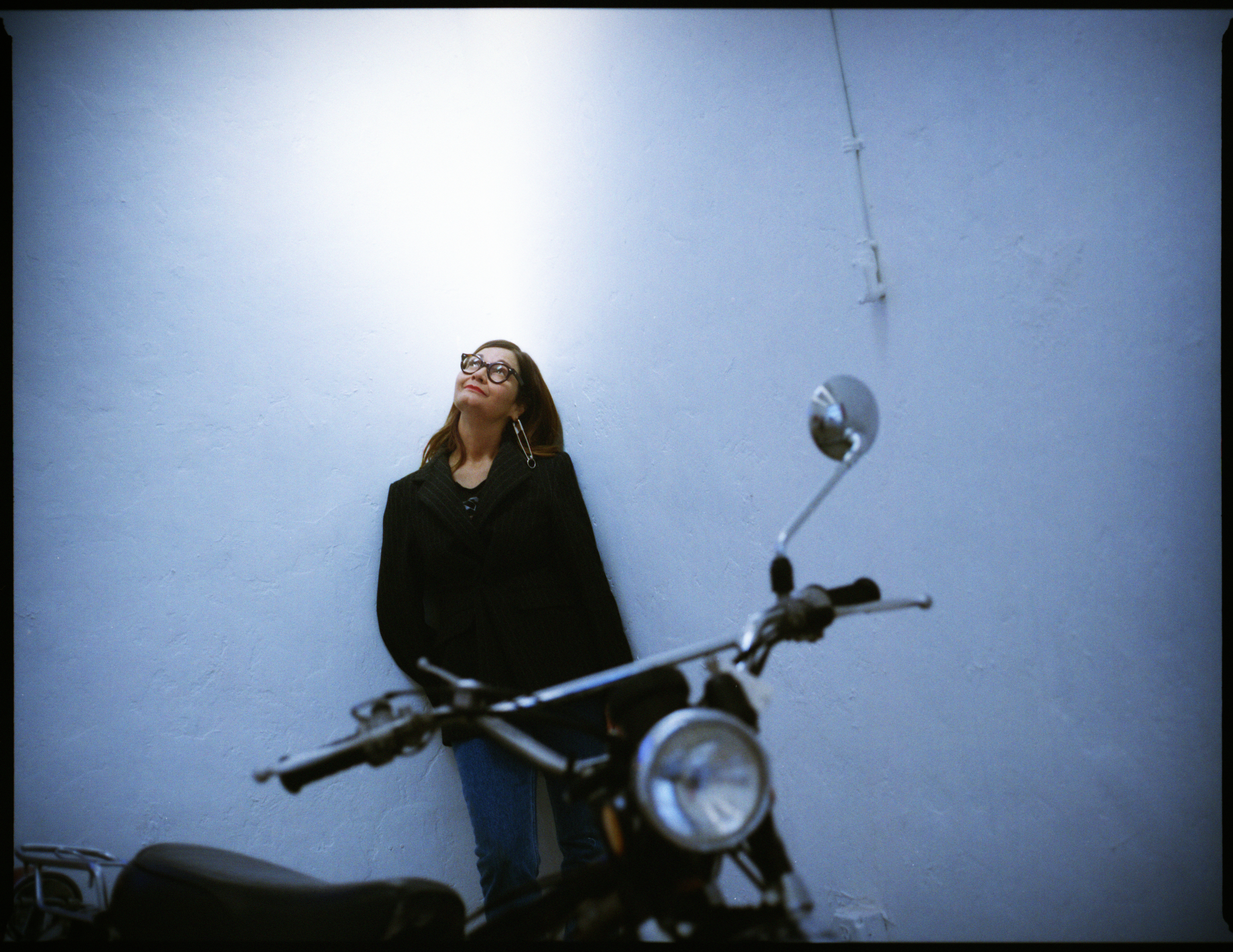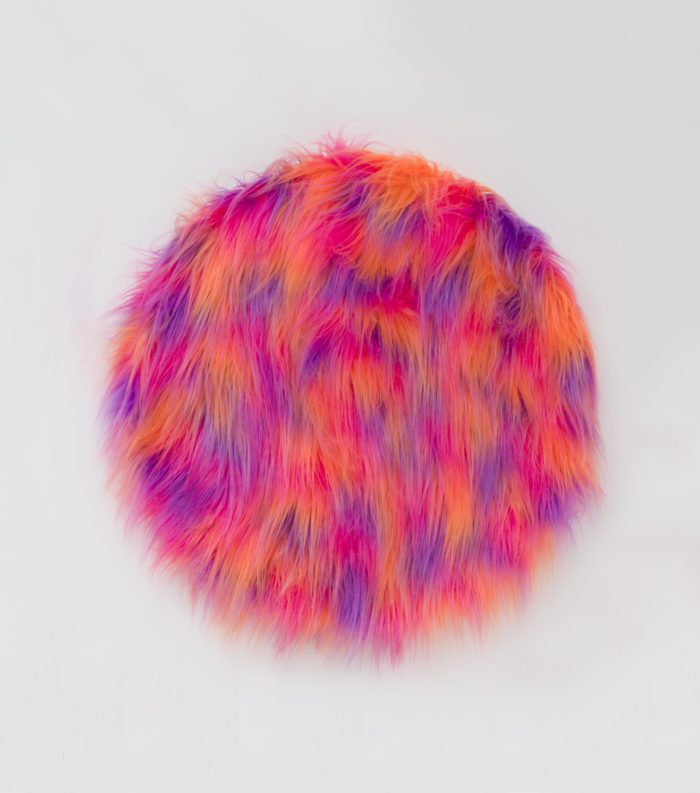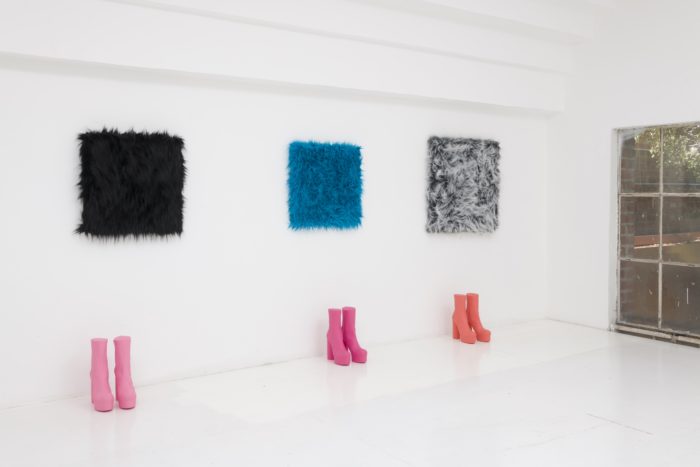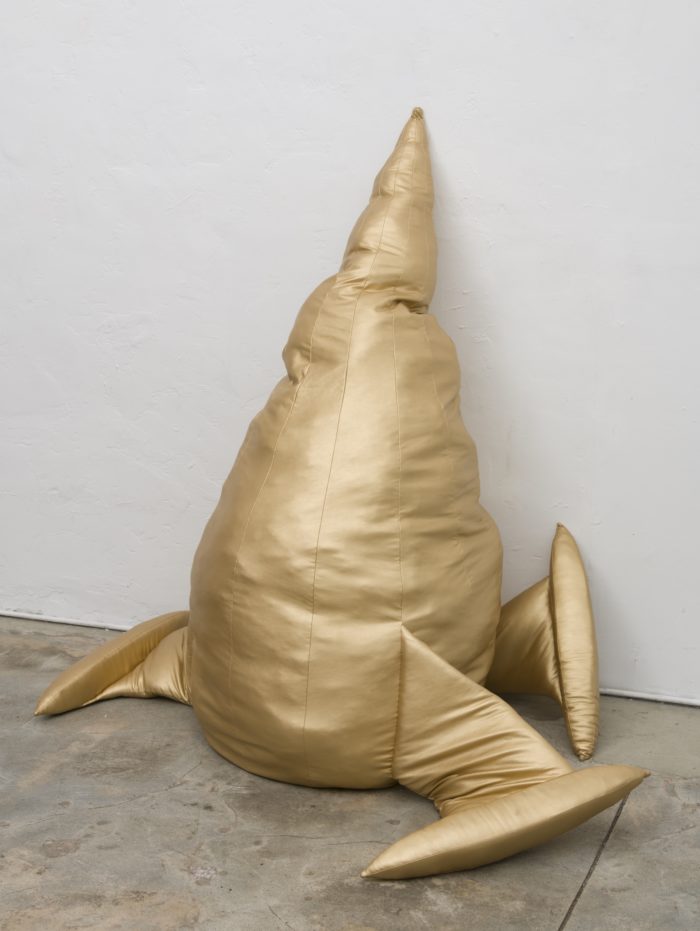
“Here we encounter Minimalism’s departure: its refusal to picture something else; a refusal which finally returns the viewer—at best a more disillusioned viewer—to more of the same.”
I begin with a quote from art historian Anna Chave’s damning critique of masculinist Minimalism, “Minimalism and the Rhetoric of Power,” not only because of Sylvie Fleury’s landmark performance piece Walking on Carl Andre (1998), in which women in heels strut all over an Andre floor piece as if it is a catwalk, but also because it is clear that Fleury asks us not to be disillusioned viewers, to not be content with more of the same.
“There is an ambivalence in my work. I have a tendency to contradict myself, and I don’t mind that. I fear things that make too much sense,” says Fleury, on the eve of her solo show at Karma LA. “Art should make some sense, but you should be able to change your mind. It’s a way of advancing conversations and going further. Things are not stagnant.” Fleury’s work is a realm of endless horizons.

Fleury’s ambivalence is productive, to be sure. She repurposes art history, objects and slogans from the fashion world, and personal narratives in such a way that her critiques feel loving and her loves feel critical. Fleury has recreated Lucio Fontana’s gashed paintings with jeans, parodied Donald Judd and Daniel Buren and mounted installation art from shopping bags. It would be easy to call her work appropriation—a favorite art world cliché from the Dadaists onward—but there is something deeper taking place. “I don’t think of my work as appropriation. I see it more as a customization,” Fleury explains. “I am also thought of as an artist who works with readymades, and it’s true, but nowadays the readymade has become such an open road for artists. There are so many different ways to create a readymade.” Customization is certainly an important turn-of-phrase, since Fleury is also the founder of the She-Devils on Wheels car club, a collective named after a 1968 sexploitation film.
In her willingness to transcend artistic boundaries, Fleury has opened up a new kind of freedom for artists working in mixed media: “I like that there are so many families of work that are all different. In the 1980s or 1990s, every season had its movement, and now all of these movements exist in parallel with each other, not chronologically. It is not like one thing brings about another. It is no longer neo- or post-.” Though Fleury might not credit herself with helping to bring about this development, I certainly would. She has become indispensable to young artists who hope to work simultaneously with art history and identity politics.

Art deemed “critical,” especially as the term relates to feminist or queer investigations, is often expected to have irony, a lack of kindness and paranoia, or at least a wink to the viewer that they should know this is all a sham. Fleury’s work, on the other hand, is both celebratory and critical, as a result of her insistence on an individual, affective relationship with art and the art world.
“I did things out of something that I felt, like with my first shopping bags,” she says. “I was the girlfriend of a more famous artist, and I would go around to all these openings. I would put on makeup and wear tight pants or a mini skirt, but people did not enjoy it. You had to be serious and intellectual. The shopping bag was important for me because you don’t even know what is inside. Something that keeps coming back in my work is what’s inside and what’s outside—you’re talking about emotion versus the superficial.” I might suggest that the inside becomes the outside in an unpredictable fashion, like the shocking or tear-jerking plot twist in your favorite film.

There has been a recent reevaluation of melodrama as a critical art, in which I certainly see Fleury as a central actor. No longer must sentimentality be pushed aside in favor of something more easily categorized as “serious.” In this vein, I ask Fleury how she manages to capture both the emotional and the conceptual with such rigor. She replies, “I have often thought about desire. Quite a few years ago I saw Strange Days with Kathryn Bigelow, and I thought it was pure genius. It was futuristic in a non-emotional way. They would take people and equip them with a device to record their emotions. Then you could buy the tape and watch it and relive the emotion. It’s also a method of filming. You capture an emotional state and transmit it to the viewer. It’s a never- ending process, because you can never manage it, and the day you do fully manage it, you are probably dead!”
Might we say that Fleury illustrates a process that most of us are afraid to undertake, one that might lead to death? To feel in a world that is increasingly unwilling to sustain us is a radical gesture, and one that is constantly policed. The art world, as has the world at large, has become increasingly jaded and unwilling to support feeling by deeming it excessive or inconsequential. Fleury’s work becomes an important space wherein we sharpen emotion as a critical tool, wherein nothing is off limits as a source of inspiration or inquiry. Each of us has a series of connections to objects or people or ideas that might seem over-the-top or separate from our intellects, and this is exactly the space Fleury hopes we will see as central and sustaining—a wonderfully queer gesture, to be sure.










 in your life?
in your life?

